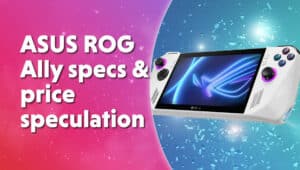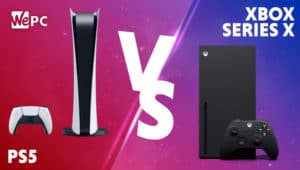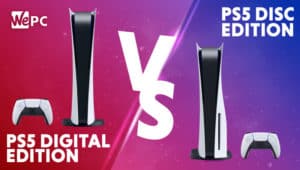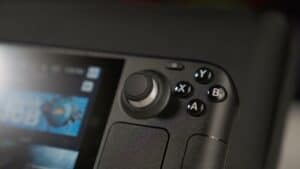ASUS ROG Ally vs Nintendo Switch – specs, price, games
Two gaming handhelds, but how do the Ally and Switch compare?
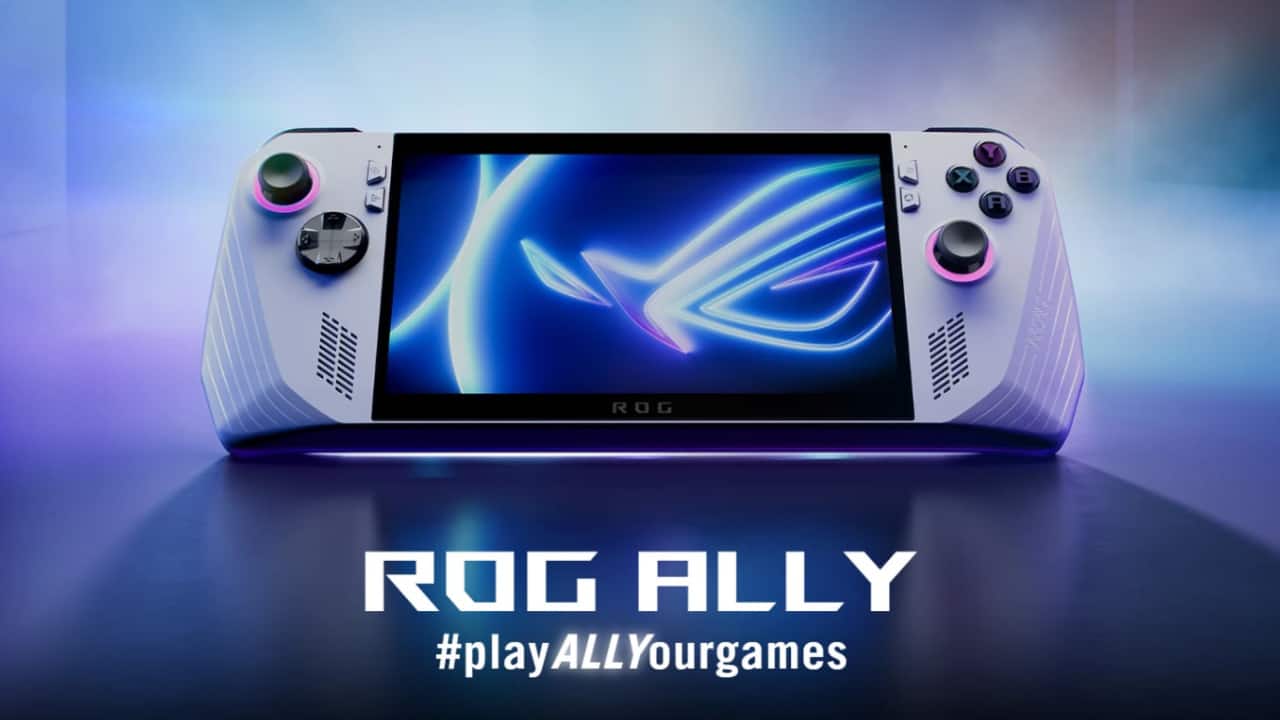
WePC is reader-supported. When you buy through links on our site, we may earn an affiliate commission. Prices subject to change. Learn more
Now that the ASUS ROG Ally has officially been released on June 13th, you may be thinking about ASUS ROG Ally vs Nintendo Switch. Especially if you’re looking for a new gaming handheld to enjoy. To jump straight to the point, these devices differ quite a lot – but by how much, and in what way? Well, we can talk you through every difference and similarity between the ROG Ally and Nintendo Switch between the specs, performance, price, and game library.
First off, the ROG Ally is a gaming PC handheld, while the Nintendo Switch is a portable console.
We’ve already done a comparison against the more closely-related Steam Deck, but the Nintendo Switch can also be seen as an alternative handheld gaming device as well. The Switch has been out for a number of years now with multiple models to it’s name, such as the popular OLED version.
The ASUS ROG Ally is now available to buy on both Amazon & Best Buy.
ASUS ROG Ally vs Nintendo Switch specs & design

Nintendo Switch OLED
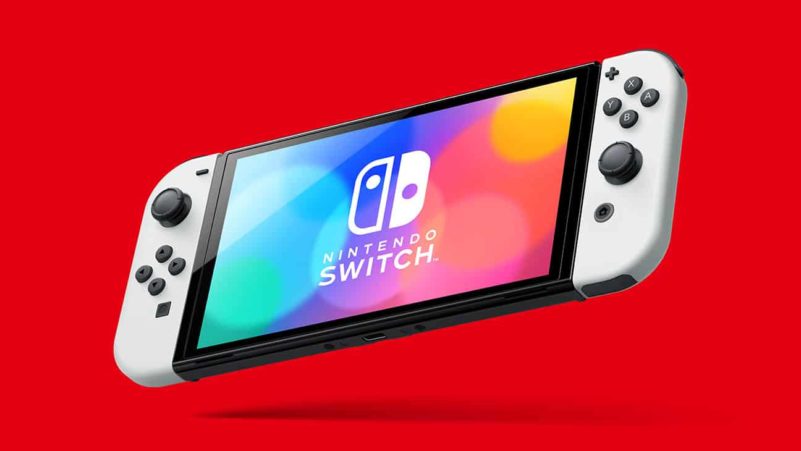
Screen
7-inch 1280 x 720p OLED multi-touch capacitive screen
Networking
Ethernet Port (Docked only) & WiFi (IEEE 802.11 a/b/g/n/ac compliant)
Joy-Con Revision
Decreased chance of Joy-Con Drift
Maybe the first thing we should compare are the hardware specs. It’s no secret that the ROG Ally is ahead of the Nintendo Switch in this area, but the Switch doesn’t require the same amount of power to be worth it. Although the OLED Switch largely has the same power, the display is obviously different.
| ASUS ROG Ally | Nintendo Switch | Nintendo Switch OLED | |
|---|---|---|---|
| Display | 7″ IPS LCD screen, 1920×1080, 120Hz refresh rate, 500 nit brightness | 6.2″ LCD, 1280×720 (supports 1080p on external display), 60Hz | 7″ OLED, 1280×720 (supports 1080p on external display), 60Hz |
| Processor | AMD Ryzen Z1 / AMD Ryzen Z1 Extreme | Nvidia custom Tegra CPU with onboard graphics & 256 stream processors | Same as base model |
| Memory | 16GB LPDDR5 RAM, 6400MTz | 4GB LPDDR4 RAM | Same as base model |
| Storage | 512GB PCIe Gen 4 (M.2 NVMe SSD) | 32GB eMMC | 64GB eMMC |
| Dimensions (W x H x D) | 280 x 111 x 21.2-32.4 mm | 239 x 102 x 28.7 mm | 242 x 102 x 14 mm |
| Weight | 608 grams | 297 grams | 319 grams |
As you can see, the ROG Ally massively outdoes the Nintendo Switch when to comes to specs, especially with it’s powerful RDNA 3 CPU. One thing the Switch has going for it is the lightweight build, making it more convenient to carry around. Likewise, the battery life is better on the Switch, reportedly as many as 9 hours of use. Early Ally models could generally reach 4 hours, but recent updates could make this at least 10% better, as reported by The Verge.
The Nintendo Switch also has the detachable Joy-Con controllers where the buttons are located, this can transform into a gamepad / controller configuration if you’re playing on a TV or monitor via HDMI while the Switch is docked. The dock also acts as a charger. To compare, the Ally actually doesn’t come with a dock as standard. However, there are a number of ASUS ROG Ally docks to buy separately, with the ROG gaming charger dock being the official choice. Opening up the potential for up to 4K gaming with an external GPU.
The ROG Ally doesn’t have this detachable controller support, as it’s all built in to the system, much like Valve’s Steam Deck. You can still hook it up to an external display though. It does have plenty of button mapping customization (per game) too. It also supports keyboard and mouse gaming, unlike the Switch, if you don’t wish to use a controller setup with analog sticks.
ASUS ROG Ally vs Nintendo Switch performance
Like we mentioned, the ROG Ally is way ahead of the Nintendo Switch on performance – that’s easy to see from the specs alone. However, the two devices have different targets in mind. The ROG Ally needs to compensate for it’s 120Hz screen, while the Nintendo Switch is much more lightweight and geared for casual players.
Switch console games are generally optimized for the platform as much as possible and usually target the 30fps mark. For the ROG Ally and it’s higher refresh rate, the much better specs are required to reach 120fps. To put it in perspective, the ASUS ROG Ally running a Nintendo Switch emulator had no problem performing – keep in mind that emulation can see a reduction in performance.
Another thing to consider is that the ASUS ROG Ally has different modes for performance – such as turbo mode and silent mode, giving you greater control over the kind of power output & performance you wish to achieve. To compare, the Nintendo Switch does actually have a boost mode of its own. This is not a setting as such, but instead a way developers can maximize performance, as the boost mode is automatically applied in supported titles.
ASUS ROG Ally vs Nintendo Switch price
Nintendo Switch OLED Model – The Legend of Zelda: Tears of the Kingdom Edition
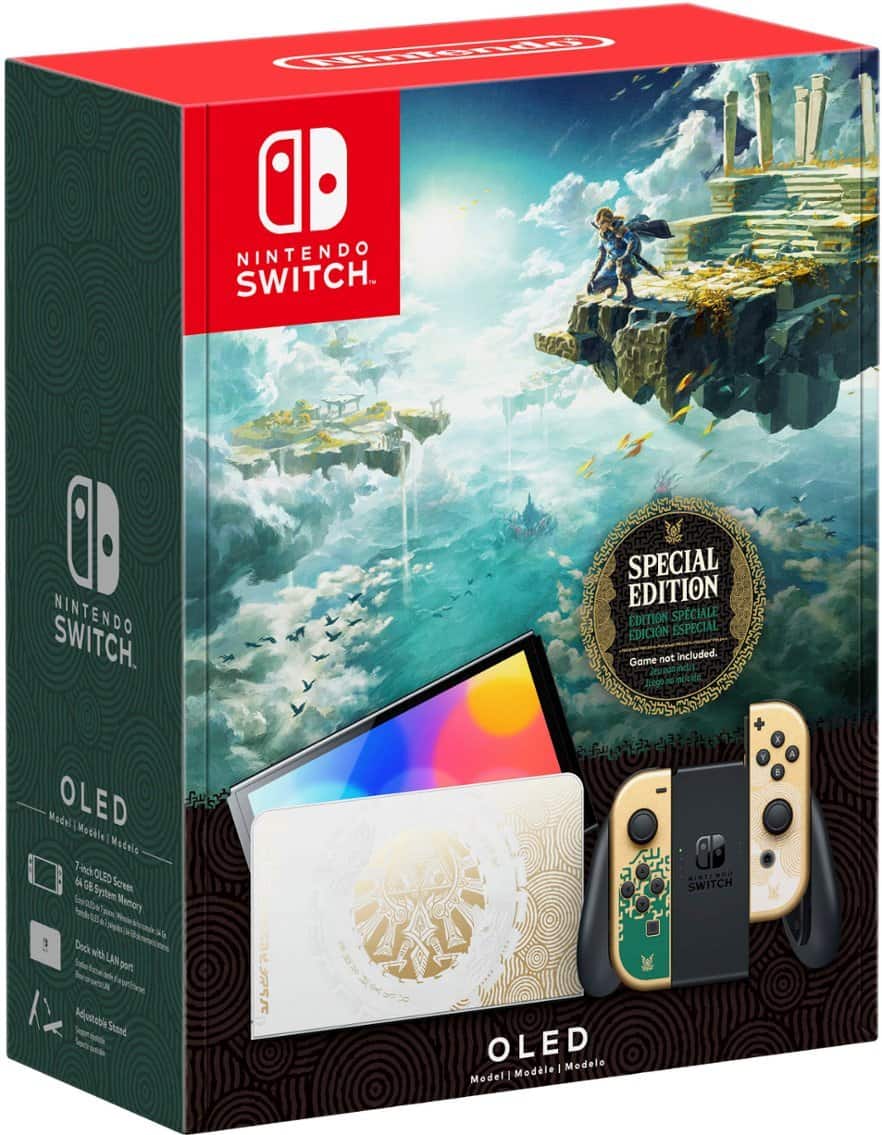
Screen type
OLED
Storage type
Flash
USB Ports
2
Color
Green (Zelda limited edition)
We’ve talked all about the stark difference in specs and performance so far, but now it’s time to consider the price. There are a bunch of models to consider here. The ASUS ROG Ally also has two models, with the more powerful Ryzen Z1 Extreme CPU included in the high-end model. However, both of them clearly outperform the Switch. The Nintendo Switch actually has three models. The Lite variant is strictly a handheld (with no external display support or dock) and is smaller than the other two choices.
- ASUS ROG Ally Ryzen Z1 512GB: $599
- ASUS ROG Ally Ryzen Z1 Extreme 512GB: $699
- Nintendo Switch price: $299.99
- Nintendo Switch OLED price: $349.99
- Nintendo Switch Litle price: $199.99
As you can see, the Switch is the much more cost-effective option. Even more so if you go for a refurbished or pre-owned choice, given that it’s been out for a while now. The original Switch released in 2017 and the OLED variant arrived in 2021. So of course, the ROG Ally launch in 2024 has a number of years on it.
ASUS ROG Ally vs Nintendo Switch games library
There is a big difference in the games on offer here. One of the main draws of the Nintendo Switch is access to Nintendo’s popular library of exclusives and own IPs – such as the Mario or The Legend of Zelda franchises.
On the other hand, the ROG Ally is open to a wider PC gaming selection, as it is Windows 11 machine with whichever game launcher you like. ASUS’ Armoury Crate provides a place to quickly access your games and launchers, from Steam and Epic Game Store to the Xbox app.
What is best here is really up to what you’d like to play.
Does the ASUS ROG Ally play Nintendo Switch games?
You can’t play Nintendo Switch games on the ROG Ally natively, though there are alternate solutions. Many favorite Switch games are generally designed for the Nintendo console exclusively, whereas the Ally is a handheld gaming PC. As the ROG Ally is running on Windows 11, it’s possible to use a play through Switch emulation. We’ve seen this used in games such as Tears of the Kingdom to boast 4K 60FPS, though this is of course not endorsed by Nintendo in any way.
The specs of the ASUS ROG Ally can handle emulation well – as shown in this YouTube video by ETA PRIME. They are playing Pokémon Sword on Nintendo Switch through the YUZU emulator. However, it could be a matter of time before Nintendo crack down even more on emulators like this if something like the Ally makes it more popular.
ASUS ROG Ally vs Nintendo Switch – which is better?
That covers everything regarding the ASUS ROG Ally vs Nintendo Switch, and you can see that there is a distinct choice to be made between these two. If you’re already a PC gamer with a ton of games ready to go, the ROG Ally could be a worthy investment – you can even use it as a portable Xbox Game Pass machine! On the other hand, the Nintendo Switch is great for fans looking for Nintendo exclusives in a lightweight console.
We’d have to say that these devices have different audiences in mind. For maximum gaming performance on a larger range of titles, go for the ASUS ROG Ally. For Nintendo titles and casual gaming for cheaper, get the Nintendo Switch.
Be sure to check out our other comparison pages if you want to pit more tech against each other.
ASUS ROG Ally vs Nintendo Switch FAQs
Is the ASUS ROG Ally a console?
No, the ASUS ROG Ally isn’t a console platform. Although it’s a handheld, the device actually runs on the Windows 11 operating system.
Can I play PC games on the Nintendo Switch?
The Nintendo Switch is not built for PC gaming, so it’s not possible to play PC games on the console. Even if it could, the specs would likely limit it’s range. You can instead look to games ported over to Nintendo Switch natively.



